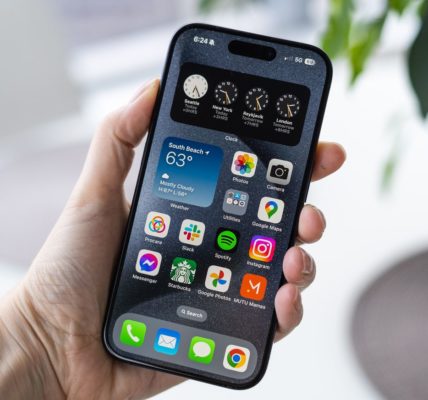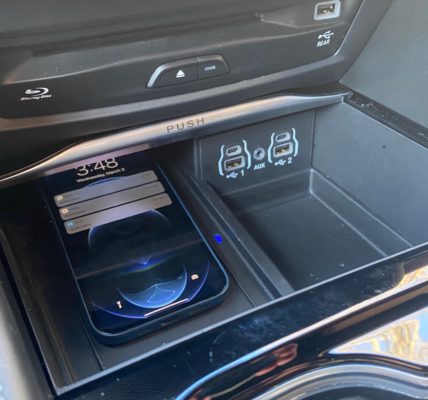With the introduction of the iPhone 15 Pro on September 12, Apple omitted one of the most innovative features and ambitious undertakings initially planned for the device – haptic volume and power buttons.
As the iPhone has evolved, Apple has periodically improved vibration technology. In 2011 with the iPhone 4S, Apple began using linear resonant actuators, which greatly reduced the amount of noise produced and significantly improved response times. In 2015, the Taptic Engine was introduced with the iPhone 6s, and Apple has used it in each iPhone iteration since then. The Taptic Engine is used for Haptic Touch, where users receive haptic feedback by long-pressing certain areas on their iPhone’s display.
Project Bongo, as it was known internally, was effectively a redesign of the volume and power buttons on the iPhone 15, both in terms of function as well as appearance. As opposed to traditional mechanical buttons, haptic buttons do not move when pressed. Instead, they detect pressure and emulate the press of a physical button through the use of haptic engines which create vibrations – haptic feedback.
Here’s the sequence of events that would happen when a haptic button was pressed on the iPhone 15:
The flexure located underneath the button sensed the pressure applied to the button.
The strain gauges detected the change in pressure, and converted it into a change in resistance which could then be measured.
After this, a signal was sent to the main logic board indicating the button was pressed.
The main logic board then sent power to the Bongo Haptic Engine.
The Bongo Haptic Engine produced vibration by generating an electromagnetic field through the core and coil, which oscillated and moved towards and away from the attraction plate.
Haptic feedback was then generated through vibrations, and a slight movement upwards towards the finger mimicked the sensation of a physical button being pressed down.
The assembly featured two strain gauges, one on each side of the button. Strain gauges detected changes in pressure and converted those into resistance changes within an electrical circuit. The change in resistance resulted in a change in voltage, which was able to be measured. The difference in potential between the two strain gauges was used to determine the position of the origin of the pressure (Volume Up or Volume Down).
For the Bongo project, Apple developed the “Bongo Haptic Engine,” which is an electromagnetically driven reluctance motor. Reluctance motors are an advanced type of electromotor commonly used in microelectronics. Through the use of a reluctance motor, Apple was able to implement vibration speeds faster than that of a traditional vibration motor, while also offering a faster response times. The Bongo Haptic Engine was intended to provide more nuanced vibration feedback, as well as a better user experience.
The Bongo Haptic Engine consisted of a ferromagnetic core and a copper coil, which together formed a solenoid. The haptic engine created vibrations by oscillating relative to an attraction plate located directly underneath it. This generated the vibrations that constituted haptic feedback.
We previously showcased the exact design of the Bongo module and its associated flex cables back in April of 2023. This was the final design iteration before Apple abruptly canceled the project in favor of traditional physical buttons.
From its inception, Project Bongo was kept in development and tested throughout multiple development phases, eventually being canceled late in the EVT (Engineering Validation Test) stage due to unsatisfactory test results and high hardware failure rates. With the sudden cancelation of the Bongo project, the buttons for the iPhone 15 were redesigned during subsequent development stages – CRB and DVT. As a result, the final mass production units of the iPhone 15 Pro feature standard mechanical volume and power buttons rather than haptic buttons.
From a design perspective, the most obvious change the Bongo project sought to bring was the inclusion of a unified volume button as opposed to two separate buttons – volume up and volume down. The unified volume button may have been a nod to early iPhone designs, as every iPhone prior to the iPhone 4 featured a unified volume button.
Project Bongo also had its own dedicated firmware for two devices, iPhone 15 Pro and iPhone 15 Pro Max, and could be found in two variants – internal and customer. Code related to the Bongo project indicates that it would have had a deep sleep mode as well.
As far as future iPhones are concerned, there are indications Apple is working on a replacement for the Bongo project for the iPhone 16 lineup, with plans to add capacitive buttons. It is still early in the development cycle, though, and as we saw with the iPhone 15 lineup, things can change fairly far into the process.
For more information, check out our dedicated roundup page for the iPhone 15 Pro.
This article, “Project Bongo: An In-Depth Overview of the iPhone 15 Pro’s Canceled Haptic Buttons” first appeared on MacRumors.com
Discuss this article in our forums




